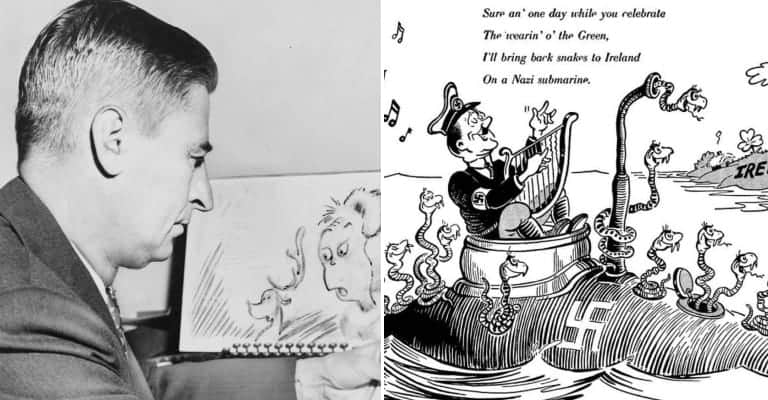Theodor Seuss Geisel, known to the world by his nom de plume Dr. Seuss, is renowned for his books which were mostly written for children, among them The Cat in the Hat, Green Eggs and Ham, Horton Hears a Hoo, and his Christmas tale which has become an essential part of the holiday in America, How the Grinch Stole Christmas. The Grinch alone has become a feature in advertising campaigns, the subject of ornaments, cards, and wrapping paper, and featured in films, recordings, costumes, and other presentations of the yuletide season. Despite being remembered primarily as a writer of children’s books, Seuss (he pronounced it rhyming with voice rather than juice) never had any children of his own.
Dr. Seuss: Early Life and WWII

Before he became famous as the author of children’s books, Seuss was a writer and illustrator within the advertising industry, as well as a noted political cartoonist. The skills he developed in those capacities led him to becoming a propagandist, generating both editorial cartoons in newspapers and magazines as well as producing propaganda drawings and films for the United States government both before and during American involvement in World War II. His editorial cartoons displayed a support for President Franklin Roosevelt, Lend-Lease (including to the Soviets), and for the incarceration of Japanese Americans for the duration of the war. In the early days of the Second World War Seuss drew more than 400 editorial cartoons for the New York newspaper PM before shifting his considerable skills of persuasion to the production of propaganda and training films.
Far from being merely an avuncular writer and coiner of new words for the entertainment of children, Seuss was a scathing political cartoonist and effective propagandist, as seen in these examples of his lesser known craft.

